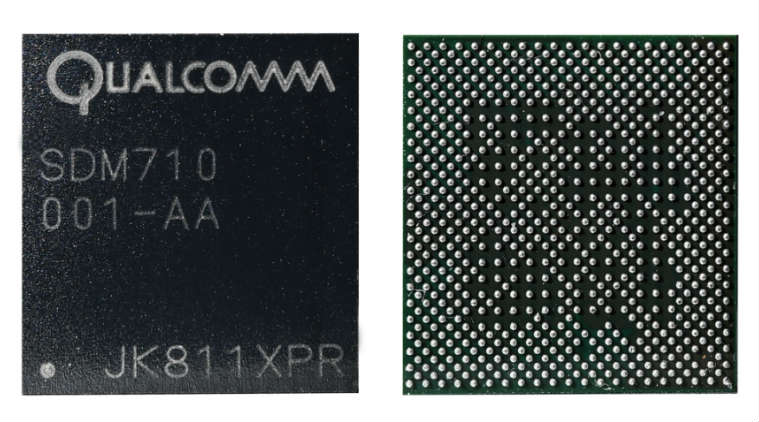 What new enhancements does the Snapdragon 710 bring to the table as compared to Snapdragon 660? How does it compare with Snapdragon 845? Let’s find out.
What new enhancements does the Snapdragon 710 bring to the table as compared to Snapdragon 660? How does it compare with Snapdragon 845? Let’s find out.
With Qualcomm announcing the new Snapdragon 710 processor, they seem to have created a new segment in between the mid-range Snapdragon 600 series and their top-end Snapdragon 800 series. First in the new lineup of Snapdragon 700-processors, Qualcomm’s latest addition sits somewhere in the middle of upper mid-range Snapdragon 660 SoC and their flagship Snapdragon 845. So what new enhancements does the Snapdragon 710 bring to the table as compared to Snapdragon 660? How does it compare with the current Qualcomm flagship? Does it have what it takes power high-end smartphones? We take a quick look at three major aspects of the new chip.
Camera
The Snapdragon 660 SoC features a 14-bit Qualcomm Spectra 160 ISP (image signal processor) that can capture up to 24MP pictures. The Snapdragon 710 chipset has stretched that limit further up to 32MP, courtesy of Qualcomm Spectra 250 ISP. It can also record 4K UHD videos with electronic image stabilization. The Snapdragon 845 mobile platform is backed by Qualcomm Spectra 280 ISP that supports up to 32MP single camera and 16MP dual cameras, similar to Spectra ISP 250 on the Snapdragon 710.
Right now, I am using OnePlus 6 that packs Qualcomm’s current flagship Snapdragon 845 processor under the hood. And guess what? OnePlus 6 supports EIS to minimise the amount of blur creeping in while recording videos. If that is what we are going to get with a phone powered by Qualcomm Snapdragon 710 SoC in the future, we will get one step closer to bridging the gap between upper mid-range and flagship high-end processors.
CPU and GPU architecture
Qualcomm Snapdragon 660 SoC is the result of eight (octa-core) custom Kryo 260 cores, clocked up to 2.2GHz. Nothing much has changed with Snapdragon 710 on that front, except for the GPU. It has the same eight-core custom Kryo cores. However, the Snapdragon 660 SoC includes Adreno 512 GPU for graphics, whereas the Snapdragon 710 will be accelerated by Adreno 616 for graphics. The graphics rendering has been supposedly improved and compatibility has been extended further to latest graphics APIs.
 The Snapdragon 710 chipset has stretched that limit further up to 32MP, courtesy of Qualcomm Spectra 250 ISP.
The Snapdragon 710 chipset has stretched that limit further up to 32MP, courtesy of Qualcomm Spectra 250 ISP.
Qualcomm Snapdragon 845 has octa-core custom Kryo 385 cores ticking at 2.8GHz. Furthermore, it is coupled with Adreno 630 GPU for improved graphics rendering and visual processing compared to its predecessor Snapdragon 835. It also supports slow-motion video recording of either 720p (HD) or 1080p (Full HD) resolutions at 480 and 240 frames per second (fps). Both Snapdragon 710 and Snapdragon 845 processors feature Qualcomm’s Hexagon 685 Digital signal processor (DSP) for features dedicated to Machine Learning and Artificial Intelligence (AI).
Display
Display is one the key differentiators between the three processors we have been discussing here. Starting with the Snapdragon 660 chipset, it supports a (theoretical) maximum resolution of 2560 x 1200 pixels. There are no smartphones available currently featuring a screen with that resolution. But that’s as high as the 660 can go in terms of display resolution. Meanwhile, the Snapdragon 710 supports a maximum Quad HD+ display resolution (up to 3040 x 1440 pixels), which can be found in select high-end smartphones. Qualcomm Snapdragon 845 chipset, on the other hand, comes with a maximum display resolution of 2 x 2,400 x 2,400 pixels. In other words, it is capable of powering up to two displays with up to 2,400 x 2,400 resolution simultaneously. That will come in handy for VR implementation.
All said and done, the Snapdragon 710 seems to borrow a lot of elements from its higher class of processors and clearly offers more that the Snapdragon 660 in all the key aspects. We won’t be surprised to see the next lot of affordable flagship devices sporting this SoC to keep the costs lower and at the same time not cutting too many corners.